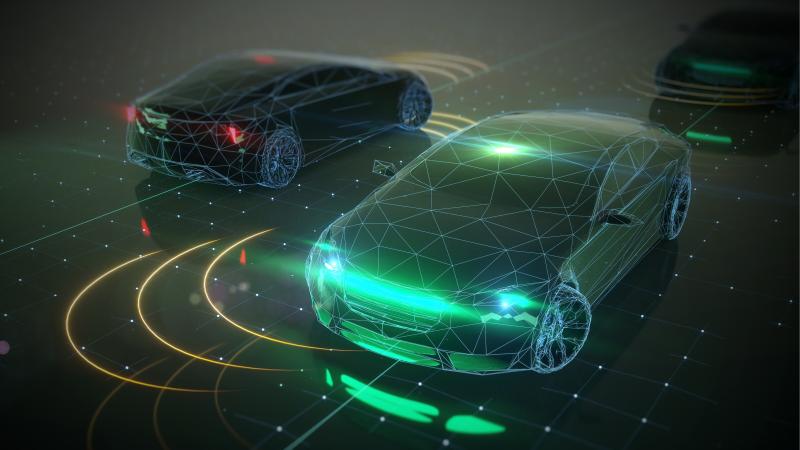Automotive radar technology has emerged as a cornerstone in the evolution of modern vehicular safety and autonomous driving systems. This advanced sensing mechanism allows vehicles to detect and interpret complex environments in real-time, dramatically improving collision avoidance, adaptive cruise control, and traffic management. The growing integration of radar systems into passenger and commercial vehicles reflects a paradigm shift towards safer, smarter transportation networks worldwide. With advancements in radar resolution, range, and object recognition capabilities, automotive radar is set to transform not only the driving experience but also the entire ecosystem around vehicle safety innovations.
How Automotive Radar Enhances Advanced Driver Assistance Systems (ADAS) Performance
Automotive radar’s primary function is to emit radio waves that bounce off objects and return to the sensor, enabling the detection of distance, speed, and direction of moving or stationary objects. This capability is pivotal for Advanced Driver Assistance Systems (ADAS), such as adaptive cruise control, lane-keeping assist, collision warning, and automatic emergency braking. By continuously scanning the road ahead and adjacent lanes, radar sensors provide vehicles with precise situational awareness, especially under poor visibility conditions like fog, rain, or night driving, where cameras and LiDAR may falter.
Radar’s long-range detection capabilities make it particularly suited for highway driving scenarios, where early hazard detection can prevent accidents. Meanwhile, short-range radar modules complement other sensors for parking assistance and blind-spot monitoring. Combining radar data with inputs from cameras and ultrasonic sensors enables a more robust and reliable decision-making framework within ADAS, fostering safer driving environments.
Key Technological Innovations Driving Growth in the Automotive Radar Market
Continuous innovation in semiconductor technology, signal processing algorithms, and radar hardware design has accelerated the development of automotive radar systems. Recent trends include the shift toward higher-frequency millimeter-wave radars operating in the 77 GHz to 81 GHz band, offering enhanced object resolution and detection accuracy. This frequency band enables finer differentiation between objects, contributing to better classification of pedestrians, cyclists, and other vehicles.
Additionally, advancements in Multiple Input Multiple Output (MIMO) radar configurations permit simultaneous transmission and reception of multiple radar signals, bolstering spatial resolution and target tracking precision. The integration of artificial intelligence and machine learning algorithms further enriches radar systems by enhancing target recognition and anticipating the behavior of detected objects, thereby improving autonomous driving capabilities.
Global manufacturers are also focusing on miniaturization and cost reduction, making radar sensors more accessible across a wider range of vehicle models, including entry-level cars and commercial fleets. The trend toward fusion sensors—devices that combine radar, camera, and LiDAR functionalities—is reshaping the sensor architecture in next-generation vehicles.
Navigational Insights on Accessing Comprehensive Automotive Radar Market Research Reports
For industry stakeholders, understanding the complex dynamics and emerging opportunities in the automotive radar sector is crucial. Detailed market research reports provide comprehensive insights into regional trends, competitive landscapes, and technology adoption rates. These reports often include segmented analysis by radar type, vehicle application, and geographic regions, facilitating strategic planning and investment decisions.
Professionals aiming to navigate the automotive radar market landscape can find targeted analysis on forecast growth trajectories, regulatory frameworks influencing deployment, and end-user demand patterns. Such studies provide critical evaluations on key market players' strategies, production capacities, and R&D initiatives, enabling businesses to align their offerings with evolving market needs. Accessing carefully curated research reports helps in identifying potential gaps and emerging niches, making them indispensable tools for market entrants and established enterprises alike.
Commercial Applications and Transactional Opportunities in Automotive Radar Systems
Automotive Radar technology presents lucrative commercial prospects across several sectors, including passenger vehicles, commercial transport, and aftersales services. Original Equipment Manufacturers (OEMs) increasingly incorporate radar-based solutions as standard or optional safety features, driving substantial market growth. Furthermore, radar technology’s adaptability to different vehicle platforms such as electric vehicles (EVs) underscores its importance as the automotive landscape shifts toward electrification.
In aftermarket servicing and telematics, radar-based sensors enable real-time vehicle diagnostics, fleet management, and preventive maintenance, reducing operational costs and enhancing asset longevity. Strategic collaborations among radar technology providers, software developers, and automotive manufacturers are creating integrated solutions that ensure seamless system functionality and user experience.
From a transactional perspective, suppliers focusing on radar semiconductor components, antenna modules, and signal processing units are witnessing growing demand. The expansion of autonomous vehicle trials and pilot projects has also stimulated investments in radar infrastructure and supportive technologies, highlighting transactional opportunities for venture capital and strategic investors in the automotive radar domain.
Future Outlook on Automotive Radar Adoption for Enhanced Autonomous Driving Features
The accelerated push toward Level 3 and Level 4 autonomous vehicles fuels the reliance on high-precision radar systems to navigate complex urban environments and unpredictable road situations. The roadmap for automotive radar includes multi-function modules that not only capture static and dynamic objects but also contribute to comprehensive 3D environmental mapping.
As regulatory agencies globally begin to mandate performance standards and safety certifications for radar-equipped ADAS, the pace of technological advancements and market penetration is expected to intensify. Consumer demand for improved vehicular safety features, combined with regulatory incentives, will likely drive exponential growth in radar sensor deployment.
In tandem with investments in 5G connectivity and edge computing, automotive radar systems will increasingly support cooperative driving technologies, where vehicles communicate with one another and with roadway infrastructure. This evolution heralds a future where automotive radar forms the backbone of intelligent transport systems delivering reduced congestion, fewer accidents, and enhanced mobility services.
‣ Get this Report in Japanese Language: 自動車用レーダー市場
‣ Get this Report in Korean Language: 차량용레이더시장
‣ Read More Related Articles: The Importance Of Accurate Addresses In Courier Deliveries For Businesses
Author Bio:
Money Singh is a seasoned content writer with over four years of experience in the market research sector. Her expertise spans various industries, including food and beverages, biotechnology, chemical and materials, defense and aerospace, consumer goods, etc. (https://www.linkedin.com/in/money-singh-590844163 )
